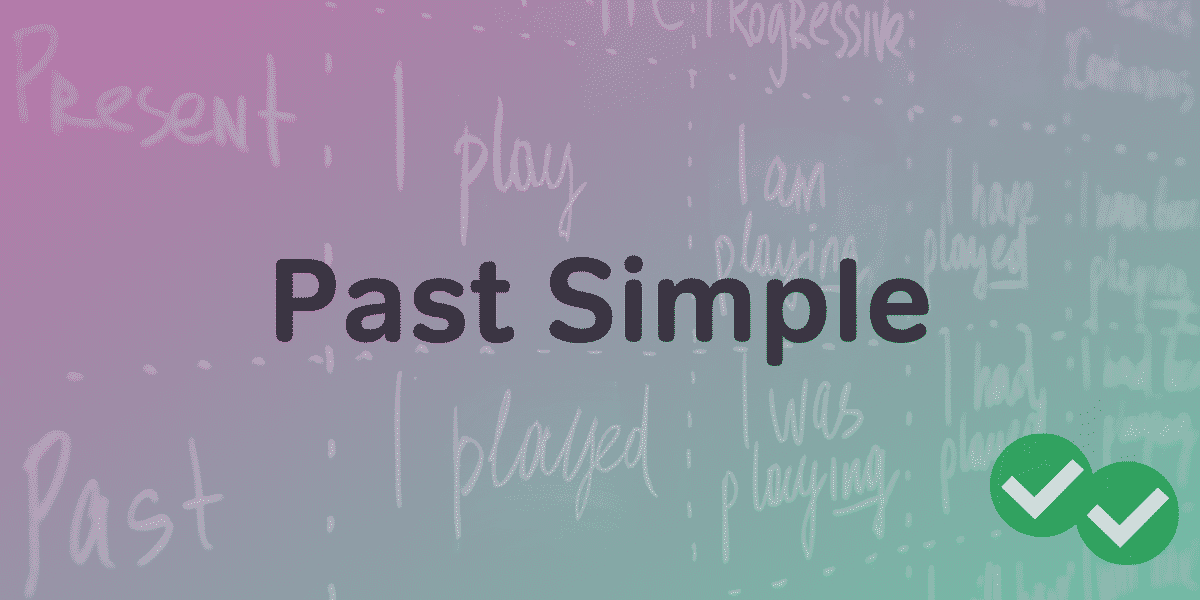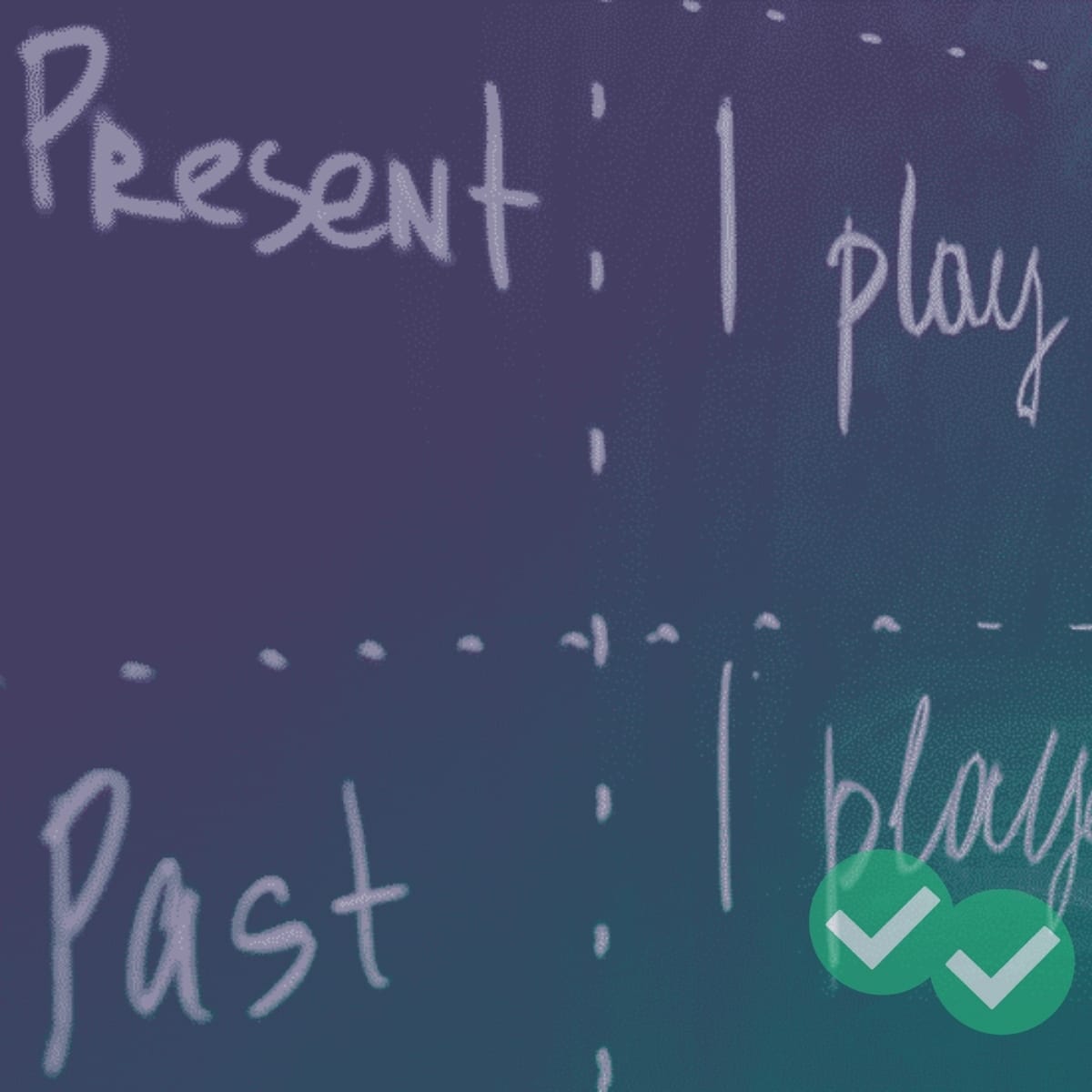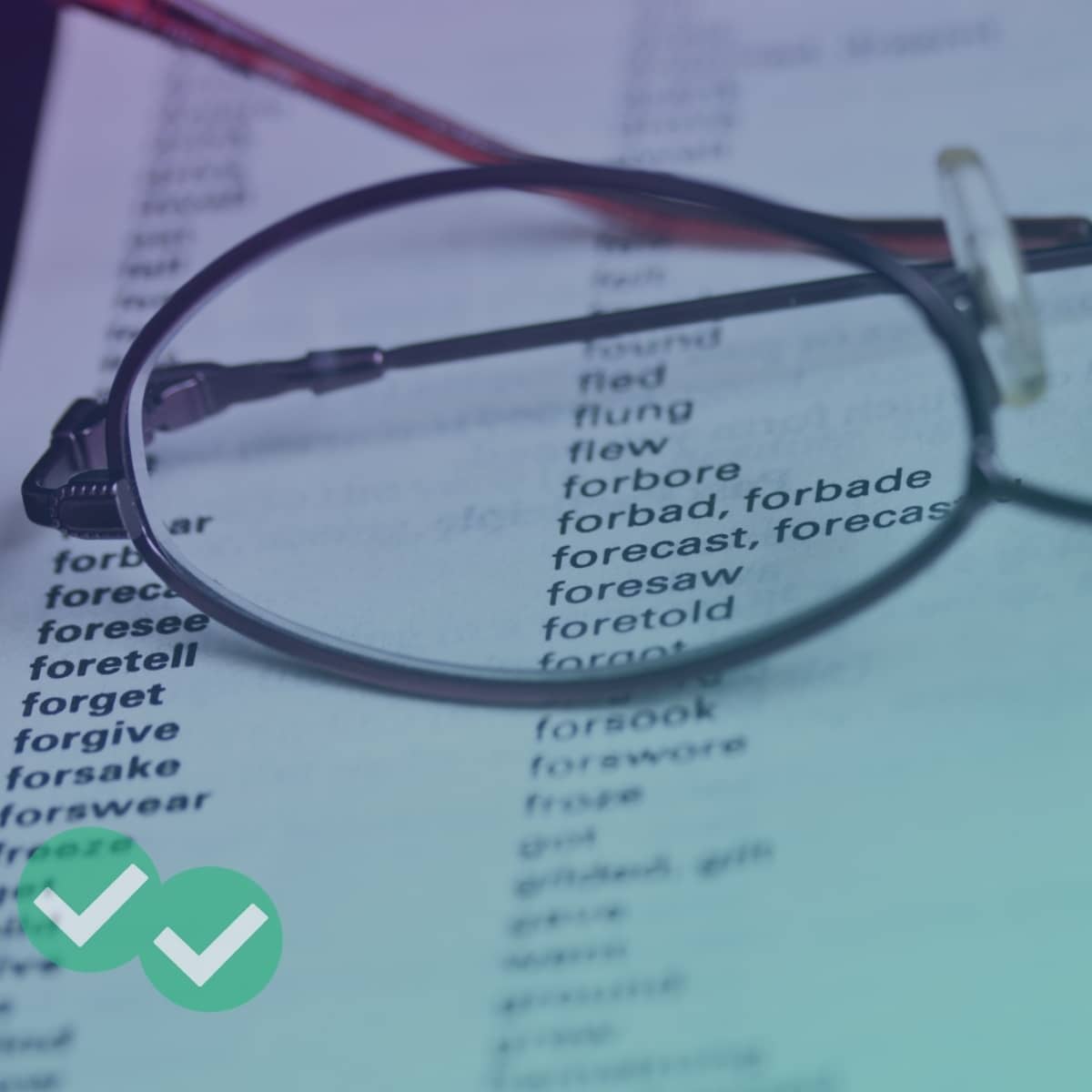
In this article, we will review and break down the Past Simple tense. We’ve included several tables so you can easily see how to create past simple sentences if you need a reminder. And, for tables and resources of verb tenses in every form, check out our main article on verb tenses.
Forming the Past Simple Tense (with Tables)
Quick Reference Table: The Simple Present Tense in All forms
KEY
V → Root Verb
V2 → the second form (Past Simple) of an irregular verb
Ved → Past form for regular verbs
| The Past Simple Tense | Most Verbs | “To be” |
| + | Ved/V2
Last night, I worked. |
Was/Were
I was convinced. He was smart. They were fast. |
| – | Did not/Didn’t + V
Last night, I didn’t work. |
Was not/Were not
I was not convinced. He was not smart. They were not fast. |
| ? | Did + subject + V
Did you work last night? |
Was/Were + Subject
Was I ready? Was she here? Were you there? |
Form this tense with regular verbs by adding -ed or -d to the root verb.
| Root Verb | Past Tense |
| Call
He calls me every day. |
Called
I called him last week. |
| Stay
You can stay today. |
Stayed
She stayed with me yesterday. |
| Jump
Jump over the puddle. |
Jumped
She jumped over the puddle yesterday. |
| Lift
Lift the bar over your head. |
Lifted
I lifted the bar over my head yesterday. |
| Carry
Carry your books to the next room. |
Carried
We carried our books to the next room. |
However, English has a long list of irregular verbs (over 200) with their own forms. Some verbs in the past tense will remain exactly the same as their root form.
| Root Verb | Past Tense |
| Bet
I bet he won’t win. |
Bet
I bet $20 on the Super Bowl last week. |
| Cost
They cost a lot of money. |
Cost
The choice cost a lot of lives. |
| Shut
They shut the door. |
Shut
She shut the door last night. |
| Let
I let him work. |
Let
They let me work last week. |
| Hurt
I hurt them every time. |
Hurt
She hurt her wrist in the game last night. |
Other irregular verbs are even more unpredictable.
| Root Verb | Past Tense |
| Drive
I drive every day. |
Drove
I drove my mom to the doctor yesterday. |
| Bite
I bite my tongue sometimes on accident. |
Bit
Yesterday, I bit my tongue on accident. |
| Break
I break things sometimes. |
Broke
Earlier, I broke a lamp. |
| Choose
I choose the third door. |
Chose
She chose to open the red door. |
| Grow
I grow roses every year. |
Grew
We grew roses last year. |
The positive aspect to verbs in the Past Simple tense is that they do not have to agree with the subject regarding numbers.
Examples:
- I called my mom last night.
- After I called my mom, everyone else called their mom as well.
Making It Negative
To make a Past Simple verb negative, use this formula: Did + not + Root Form of Verb. You can also use the contraction of did not (didn’t) instead.
Examples
- He did not call anymore.
- You didn’t go to the store.
- They did not ask us to go with them.
- Jerry didn’t run in the marathon last month.
Asking a Question
To ask a question in the Past Simple, use the formula: Did + subject + root form of the verb.
Examples:
- Did you call every day?
- Did he want us to stay or go?
- Did John need to be at the meeting?
- Did we go to the movies last week?
‘To Be’ (or Not ‘To Be’)
‘To be’ is the most-used verb in the English language and was probably the first you learned when you started your English learning journey. It’s important to note that ‘to be’ is also an irregular verb. Use the table below when you’re not sure of which form to use in the Past Simple tense.
| Singular | Subject Pronoun | To be |
| First-Person | I | was |
| Second-Person | You | were |
| Third-Person | He/She/It | was |
| Plural | Subject Pronoun | Verb |
| First-Person | We | were |
| Second-Person | You | were |
| Third-Person | They | were |
The rules for using ‘to be’ in negative and question form remain the same (scroll up to the first table in this article). Note that the contractions wasn’t and weren’t could be used in place of was not and were not.
Examples:
- I wasn’t here.
- They weren’t smart.
- Were you there?
- Was she okay?
When to Use Past Simple Tense
Use #1
When describing things that were completed in the past or existed before the present.
For example, if I wanted to tell you what happened when my friend Johnny and his band visited last week, I would use sentences like:
- Johnny and his group arrived around 3 p.m.
- Their show was at 9.
- My parents screamed when they heard the news about the show.
- We all went to the concert together.
- It was an amazing experience that I will never forget.
When using the Past Simple tense, you’re describing an action that happened in the past and is finished.
**Note: Use the past continuous tense if you want to emphasize that the action was in progress.**
Use #2
When describing something that happened for a duration of time in the past but stopped.
Durations are longer actions that happen over a period of time. They’re often used with time indicators like for three years, for 20 minutes, all day, all night, etc.
Examples:
- I waited for 30 minutes.
- Emily lived in China for five years.
- We worked all day.
- They searched all night.
Use #3
When describing an old habit from the past.
This usage is often accompanied by time indicators like never, when, always, often, usually, etc…
Examples:
- I studied Spanish when I was in high school.
- We often walked the dogs in the afternoon.
- Cheryl usually baked cakes on Tuesdays.
- Did you play football when you were in grade school?
Use #4
When talking about past facts or generalizations
Use the Past Simple tense to describe something that was factual but is no longer true.
Examples:
- Johnny was timid, but loosened up when his mother smiled at him.
- She didn’t like guacamole when she was young.
Knowing the verb conjugations in the Past Simple tense is must-have knowledge for effective communication. Keep practicing, and you will get the hang of it!




Leave a Reply